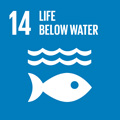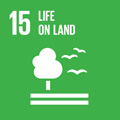- Docente: Sandro Manservisi
- Credits: 6
- SSD: ING-IND/19
- Language: English
- Moduli: Sandro Manservisi (Modulo 1) Antonio Cervone (Modulo 2)
- Teaching Mode: Traditional lectures (Modulo 1) Traditional lectures (Modulo 2)
- Campus: Bologna
-
Corso:
Second cycle degree programme (LM) in
Energy Engineering (cod. 0935)
Also valid for Second cycle degree programme (LM) in Energy Engineering (cod. 0935)
-
from Sep 20, 2023 to Dec 20, 2023
-
from Sep 22, 2023 to Dec 15, 2023
Learning outcomes
The course aims to complete the basic knowledge related to the turbulent motion of a fluid in typical applications of energy engineering. In particular, situations of dynamic and thermal turbulence are analyzed in free flows and flows confined by walls of industrial interest. The course is also characterized by the introduction of advanced numerical methods that are used to solve conservation equations of convective-diffusive type that include several turbulence models. At the end of the course the student acquires knowledge regarding the use of turbulence models in numerical simulations of the DNS, LES and RANS type for incompressible flows.
Course contents
The course, divided into two modules (module I (lecture) and module II (laboratory tutorial)), deals with turbulence models for engineering. The course has classroom and laboratory lessons. Classroom lectures deal with theory relevant to understanding turbulence and models used in engineering applications. The laboratory tutorials allows the student to directly understand the various models that have been created for the computational simulation of this phenomenon.
Module 1 (Prof. Manservisi)
Part 1 - Introduction
Turbulent flows. Conservation equations for incompressible flows: conservation of mass, conservation of momentum, conservation of energy, approximation of Oberbeck-Boussinesq.
DNS (Direct Navier-Stokes) equations. Basic statistical definitions, random variables, random vectors, statistical description of turbulent flows.
LES (Large Eddy Simulation) equations. Basic of LES. Filtering and LES equations.
The RANS equations. The Reynolds-Averaged Navier-Stokes equation, Reynolds-Averaged energy equation, the turbulence closure problem.
Wall turbulence. Channel flow, pipe flow, law of the wall for velocity, law of the wall for temperature.
Part 2 - Turbulence modeling:
LES (Large Eddy Simulation) models. Basic of LES modeling. Smagorinsky-Lilly model, sub-grid models.
Eddy viscosity models. The k-ε model, the k-ω model, near-wall turbulence treatment and boundary turbulence conditions.
Eddy thermal diffusivity models. The kθ-εθ model,the kθ-ωθ model, near-wall thermal turbulence treatment
Algebraic models: algebraic stress and explicit algebraic heat flux models.
Module 2 (Prof. Cervone)
Part 3 - Simulation on Laboratory:
The simulation in laboratory is performed with open-source packages:
- Libmesh simulation (in-house turbulence models)
- OpenFoam simulation (OF turbulence class package)
Readings/Bibliography
The course is based on teacher's notes. The notes and slides are available on https://virtuale.unibo.it
Teaching methods
Conventional classroom lesson and laboratory tutorials.
Teaching material: the teaching material presented in class will be made available to the student in electronic format via the internet. To obtain the teaching material: https://virtuale.unibo.it.
In consideration of the type of activity and the teaching methods adopted, attendance of this training activity requires the prior participation of all students in modules 1 and 2 of training on safety in places of study, [https://elearning-sicurezza.unibo .it/] in e-learning mode
Assessment methods
The exam consists of a written examination with three questions: one question regarding turbulence equations (part 1) and two questions on turbulence models (part 2)
Module 2
The exam consists of an oral exam in which the student illustrates a project with CFD simulations and turbulence models.
Teaching tools
Personal computer and workstation in Lab 2.
Office hours
See the website of Sandro Manservisi
See the website of Antonio Cervone
SDGs




This teaching activity contributes to the achievement of the Sustainable Development Goals of the UN 2030 Agenda.
